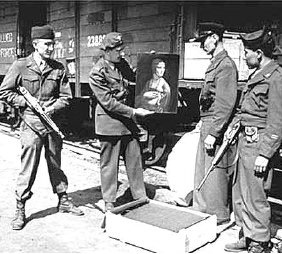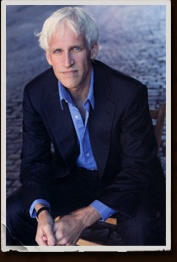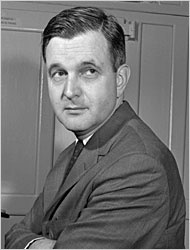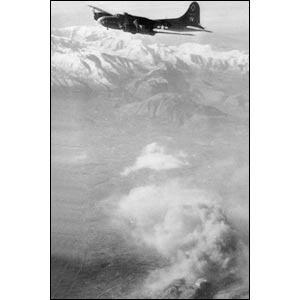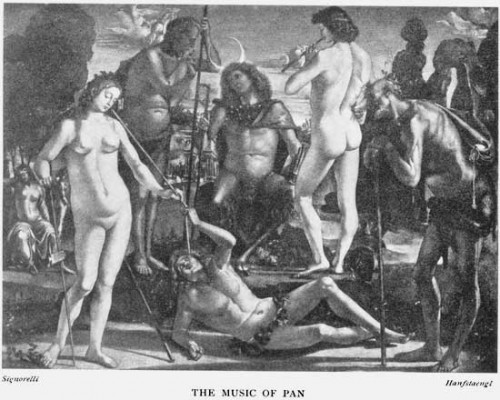Robert M. Edsel's, Rescuing Da Vinci
A pictorial history of organized art looting and restitution
By: Michael Miller - Jan 06, 2007
Robert M. Edsel, Rescuing Da Vinci, Laurel Publishing, 2006, Dallas, foreword by Lynn H. Nicholas and Edmund F. Pillsbury; http://www.rescuingdavinci.comAfter finding the documentary The Rape of Europa rather worse than deficient, because its superficiality and occasional inaccuracy have the potential to disseminate misinformation, I'm happy to say that readers of Lynn H. Nicholas' 1994 book, The Rape of Europa, now have a useful, informative, and elegant alternative, if they find themselves yearning for more visual documentation: Robert M. Edsel, Rescuing Da Vinci, a personal, but thoroughly researched and responsible compilation of photographs with brief explanatory texts by a thoughtful retired businessman and collector, who was inspired by Mrs. Nicholas' book. Rescuing da Vinci not only provides a wealth of well-reproduced photographs and documents in an attractive form, it tells the story most eloquently and provides a sound introduction to anyone who hasn't yet read The Rape of Europa.
The subject is the vast systematic acquisition of artworks by purchase and seizure by the National Socialist government and its leaders before and during the Second World War, as well as its restitution by the Allies in the years following the War. The focus of Mr. Edsel's interests, however, is rather different from that of Mrs. Nicholas. While she devotes nine of her twelve chapters to the collecting activities of the Nazis and three to the restitution process, he treats both phases pretty much equally, partly because of his fascination with the so-called "Monuments Men," a group of mostly specially qualified people who were assigned the task of collecting, cataloguing, preserving, and restituting the thousands of artworks hidden away by the Nazis in mines, country houses, and other depots in Germany and Italy. Like Mrs. Nicholas, Mr. Edsel allows his topic to spill over into the closely related subject of the destruction of works of art in military operations, above all the notorious destruction of the Benedictine abbey of Monte Cassino by the massive Allied bombardment of March 15, 1944. Indeed it is impossible to keep them separate, since it was the negative public reaction and Nazi propaganda campaign following this incident which stimulated the Americans at least to pay more attention to sparing historical and artistic monuments in combat and energized support for the small and minimally funded Monuments, Fine Arts, and Archives program of the Civil Affairs and Military Government Sections of the Allied Armies under which the "monuments men" carried out their duties. Although Mr. Edsel gives a cogent brief account of the foundation and operation of this bureau and its origins in the "Harvard Group," he tends to skew his account in favor of the Americans, who did indeed have more resources to devote to restitution. However, other Allied governments were active in this as well. While the famous Rose Valland is mentioned, as well as some British officers, his account should be more internationally balanced. One really can't discuss restitution in Italy without mentioning the very important Rodolfo Siviero. What's more, the Americans' role was not exactly pure. For every honest and hard-working functionary there were numerous G.I.'s who were energetically looting and pilfering anything from rubbing alcohol to the Samuhel Gospels, as Kenneth D. Alford reported in his book, The Spoils of World War II, which is in itself very much worth reading. Mr. Edsel's somewhat narrow viewpoint is the most serious flaw of an otherwise meticulously balanced treatment. On the other hand, pages 150 and 151 juxtapose the photographs and stories of one British and one American "monuments men" who were killed in the line of duty. Still, I think we need a little more detail about non-American officials.
Between the MFAA and the Marshall Plan Americans were often credited with more than they deserved. The eminent historian Herbert Bloch in his pamphlet, "The Bombing of Monte Cassino," relates how many people believed that the reconstruction of Monte Cassino was paid for by the United States. In fact,not one cent came from them, because they viewed support of that kind to be an admission of guilt. (It was funded entirely by the Italian government.) After the bombing a group of American scholars came together to form an organization to raise money for the reconstruction, but they were discouraged by government officials because they wanted no hint of culpability to float to the surface.
One of the most striking aspects of the story of the monuments men, is the way in which several of them became leading figures in the art world over the next half century. George Stout was already director of the conservation lab at the Fogg Art Museum at Harvard. His writings are still basic reading today. James Rorimer became an outstanding director of the Metropolitan Museum of Art, his influence sadly cut short by an early death. It is said that after the war he wore combat boots every day, even with evening clothes at museum functions. He died of a heart attack following a fierce board meeting. Sherman Lee, who was stationed in Japan, became one of our leading connoisseurs of Asian art, and as director of the Cleveland Museum of Art between 1958 and 1983, made it a great encyclopedic art museum it still is. J. B. Ward-Perkins became director of the British School in Rome. Frederick Hartt was an influential professor at the University of Virginia. S. Lane Faison nurtured generations of future prominent directors and curators at Williams. Craig Hugh Smyth, a distinguished scholar of Italian mannerism, was professor at the Insitute of Fine Arts at NYU and director of Harvard's Center for Italian Renaissance Studies at Villa I Tatti in Florence. He died on December 22 this past year at the age of 91, the most recent victim of time among them. When, as young men, they were faced with the responsibility of cataloguing and caring for thousands of stray art works, many of them of the highest importance, they received a unique education. Through them and the émigré professors from Germany art history became the vital discipline in was in America in the third quarter of the twentieth century. That was a result of the War. What will it take to teach contemporary art historians that objects are important?
The organization and design of Rescuing da Vinci do a wonderful job of storytelling. I was particularly impressed by Mr. Edsel's thoroughness—he tends to illustrate a point with several images, when many authors would be content with one, and he uses this most effectively in moving the story forward. His prologue is an excellent example. He begins his narrative not with a work of art, but with a railcar, the one in which the armistice ending World War I was signed. This railcar was preserved in situ by the French as a monument to their victory. To the Germans it was a bitter symbol of their humiliation. Consequently Hitler chose it as the scene for the negotiations of France's capitulation in June 1940. Hitler and the negotiations were amply photographed, before the railcar was removed to Berlin, where it was displayed as a monument. While this is ancillary to the main topic, it is a perfect illustration of the Nazis' attitude to spoils as political symbols and their public display. Hence the book includes no fewer than six large illustrations of the railcar and the ceremonies that occured around it. As a result we get the feeling of actually being there as a witness, participating in the public display so crucial to Hitler and his régime, just as we do through Heinrich Hoffmann's haunting images of Hitler and his staff poring over the model of Linz and its planned Hitler Museum, where the spoils were to be displayed in the new order. The selection of images and their presentation (some full frame and others cropped) is cinematic. At the beginning of the prologue we see Hitler and his henchmen lined up between the railcar and the monument at Compiégne, and at the beginning of the ensuing Chapter 1 we face Hitler once again, this time alone, speaking from the rostrum at Nuremberg. Some of this must be credited to the keen eye and timing of Hoffmann, Hitler's personal photographer, and the other photographers who were on the scene. By contrast Mr. Edsel's treatment of each image and its caption is scrupulous. As he explains, "in many instances the captions...merely explain the subject matter and the context in which it was taken. They are my words... In other instances...some of the words come from journalists, others participants...Combining their words with the photographs comes as close as possible to recreating that particular moment in time." The balance he maintains between artful story-telling, immediacy, and honesty is truly remarkable and puts his book in a class by itself as illustrated history.
Mr Edsel includes many historical photographs of familiar artworks in their wartime situation (for example Giotto's Ognissanti Madonna from the Uffizi, Leonardo's Lady with the Ermine from Cracow, or Rembrandt's Nightwatch) together with full color images of the works in their present state, an invitation to the contemplation of art which does much to keep the subject in proper focus. The reader shouldn't forget that the book is about art ultimately, even if its immediate topic is an aberrant disruption in their provenance, which in most cases resulted in a happy ending, thanks to efforts of Allied officials to return the art to its rightful place. And provenance is important because it helps us to identify and attribute artworks, and because it tells a fascinating story of the shifting context of art and perhaps even something about the original context. One blogger calls Lynn Nicholas' book "one of his favorite books about art." In truth our time is better spent reading a book like Sydney Freedberg's Painting of the High Renaissance in Rome and Florence, or Erwin Panofsky's Studies in Iconology (to name two classic books some Clark Fellows will probably find hopelessly old-fashioned), visiting a museum, or enjoying some small work we have acquired for ourselves—in a legitimate fashion, it is to be hoped.
*
Mr. Edsel maintains a website (http://www.rescuingdavinci.com) not only to promote his book, but to gather and make available supplementary information he has acquired since publication, particularly data about the men and women who served in the MFAA. Readers of the book should keep an eye on this site. It is an excellent way to keep a book up to date.http://homepages.nyu.edu/~mjm11/index.html
michaeljames48@gmail.com

